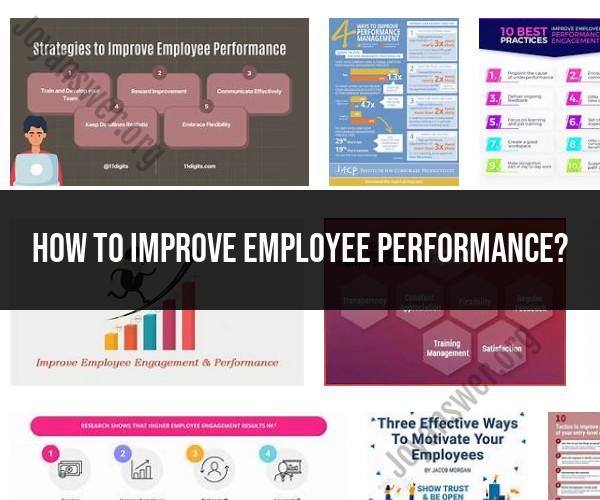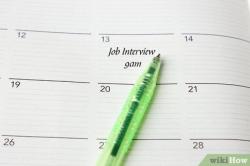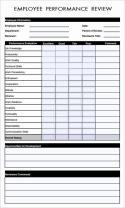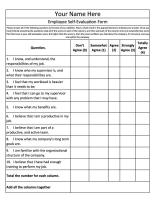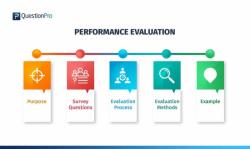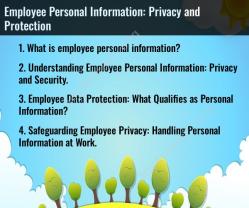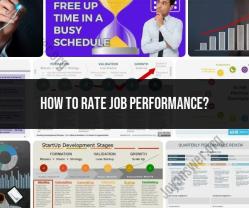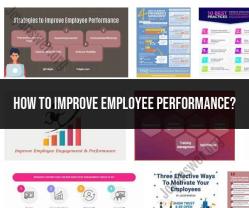How to improve employee performance?
Improving employee performance is essential for the success of any organization. High-performing employees contribute to increased productivity, better quality of work, and a positive work environment. Here are some strategies to enhance employee performance:
Set Clear Expectations:
- Define clear job roles, responsibilities, and performance expectations for each employee. Make sure employees understand what is expected of them and how their work contributes to the overall goals of the organization.
Provide Regular Feedback:
- Offer constructive feedback on an ongoing basis. Regular feedback sessions can help employees understand their strengths and areas for improvement. Feedback should be specific, actionable, and focused on performance rather than personal traits.
Goal Setting:
- Set SMART (Specific, Measurable, Achievable, Relevant, Time-bound) goals with employees. When employees have clear, achievable goals, they are more motivated to perform at their best to meet or exceed those goals.
Training and Development:
- Invest in employee training and development programs. Provide opportunities for skill-building and career growth. When employees feel that they are continually learning and growing, they are more engaged and motivated.
Recognition and Rewards:
- Recognize and reward employees for their achievements and contributions. Rewards can be both monetary (e.g., bonuses, raises) and non-monetary (e.g., public recognition, certificates). Feeling appreciated and valued motivates employees to perform well.
Create a Positive Work Environment:
- Foster a workplace culture that promotes positivity, respect, and collaboration. Employees are more likely to perform at their best when they feel supported and encouraged by their colleagues and supervisors.
Empower and Delegate:
- Give employees autonomy and trust them with responsibilities. When employees have a sense of ownership over their work, they are often more motivated to perform at a high level.
Communication:
- Promote open and transparent communication. Encourage employees to voice their ideas, concerns, and suggestions. When employees feel heard and involved in decision-making, they are more likely to be engaged and committed.
Performance Reviews:
- Conduct regular performance reviews or evaluations. Use these sessions to discuss progress, set new goals, and identify areas for improvement. Performance reviews should be a two-way conversation.
Work-Life Balance:
- Encourage work-life balance by offering flexible work arrangements when possible. Overworked and stressed employees are less likely to perform at their best.
Conflict Resolution:
- Address workplace conflicts promptly and effectively. Conflicts can be a significant source of stress and can hinder performance. Encourage open and respectful conflict resolution processes.
Incentives and Bonuses:
- Consider implementing performance-based incentives or bonuses. These can motivate employees to achieve specific targets or exceed expectations.
Career Path Development:
- Provide employees with a clear career path within the organization. Show them how their current role aligns with future opportunities and advancement.
Peer Recognition:
- Encourage peer recognition programs where employees can acknowledge and appreciate their colleagues' contributions. This fosters a culture of mutual support and motivation.
Regular Check-Ins:
- Schedule regular one-on-one check-in meetings with employees to discuss their progress, challenges, and career aspirations. These meetings build trust and keep performance on track.
Provide Resources:
- Ensure employees have access to the tools, technology, and resources they need to perform their jobs effectively. Inadequate resources can hinder performance.
Remember that every employee is unique, so it's important to tailor your approach to each individual's needs and preferences. Additionally, continuously monitor and adapt your strategies to ensure they align with changing organizational goals and employee expectations.
Strategies for Improving Employee Performance
There are many different strategies that managers can use to improve employee performance. Some of the most effective strategies include:
- Set clear expectations. Employees need to know what is expected of them in order to perform well. Managers should set clear goals and objectives for employees and provide regular feedback on their performance.
- Provide training and development opportunities. Employees need to have the skills and knowledge they need to do their jobs well. Managers should provide training and development opportunities to help employees learn new skills and stay up-to-date on the latest trends in their field.
- Create a supportive work environment. Employees need to feel supported and valued in order to perform at their best. Managers should create a positive work environment where employees feel comfortable asking questions and making mistakes.
- Recognize and reward good performance. When employees perform well, it is important to recognize and reward their efforts. This will help to motivate employees and encourage them to continue performing at a high level.
Coaching Employees to Optimize Productivity and Results
Coaching is a valuable tool that managers can use to improve employee performance. Coaching can help employees to identify and develop their strengths, overcome their weaknesses, and achieve their goals.
To coach employees effectively, managers should:
- Build a strong relationship with the employee. This will help to create a trusting environment where the employee feels comfortable opening up and discussing their performance.
- Set clear goals for the coaching process. What does the manager want the employee to achieve through coaching? Once the goals are clear, the manager and employee can work together to develop a plan to achieve them.
- Provide regular feedback. The manager should provide the employee with regular feedback on their performance. This feedback should be specific, timely, and constructive.
- Help the employee to develop a plan for improvement. Once the manager and employee have identified the areas where the employee needs to improve, they can work together to develop a plan for improvement. The plan should include specific steps that the employee can take to improve their performance.
- Follow up on the plan. The manager should follow up with the employee on a regular basis to see how they are doing and to provide support and encouragement.
Assessing and Acting on Employee Performance Issues
When a manager identifies a performance issue with an employee, it is important to address the issue promptly and directly. The manager should meet with the employee to discuss the issue and to develop a plan for improvement.
The manager should also document the performance issue and the plan for improvement. This documentation will help to protect the manager in case the employee's performance does not improve.
If the employee's performance does not improve after the manager has taken steps to address the issue, the manager may need to take disciplinary action. This may include a verbal warning, a written warning, or termination of employment.
It is important to note that disciplinary action should be a last resort. Managers should always try to work with employees to improve their performance before taking disciplinary action.
By following these strategies, managers can improve employee performance and create a more productive and successful workplace.
